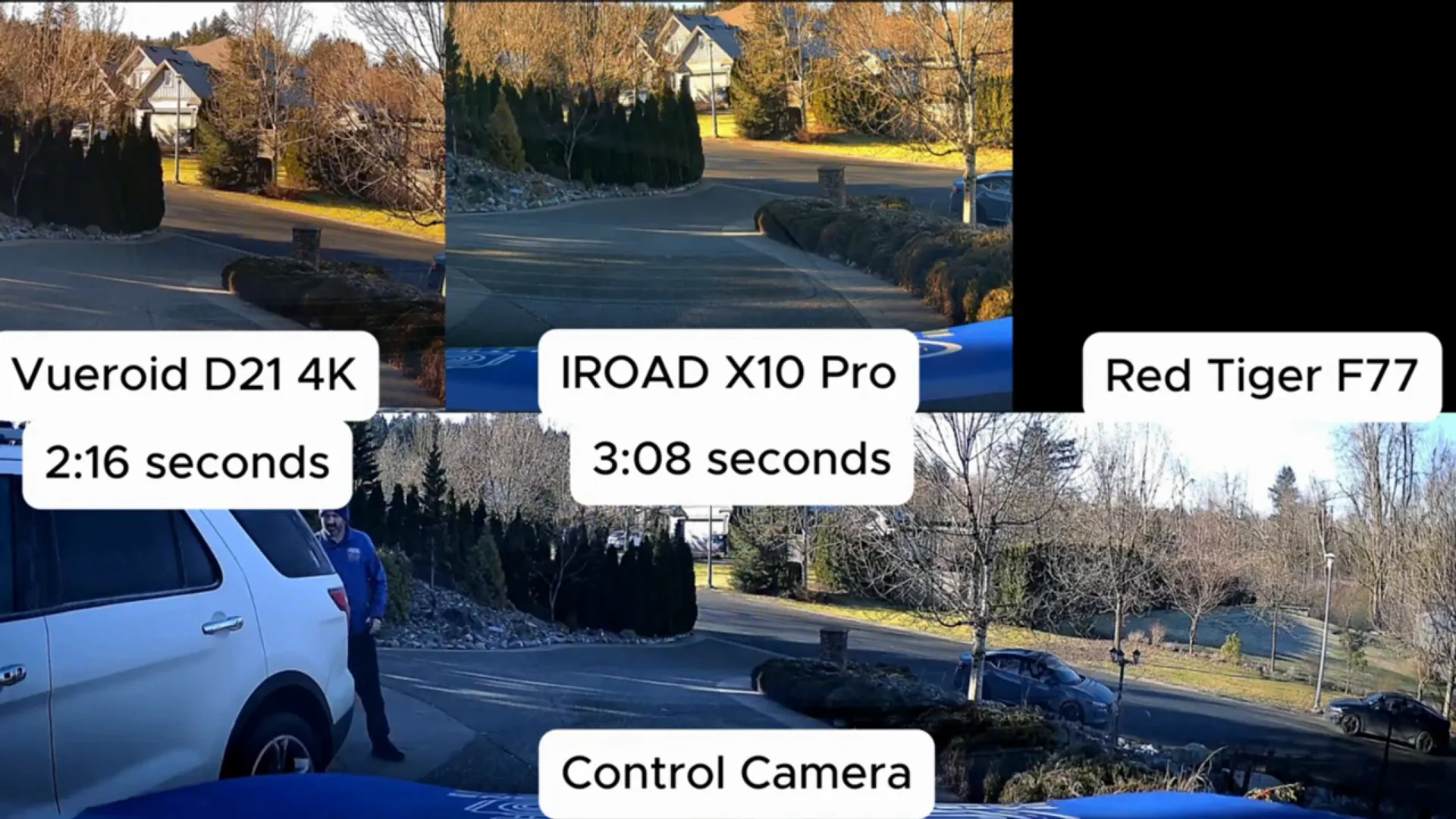How to Choose a Dash Cam with the PERFECT Parking Mode?

When it comes to selecting the right dash camera, one of the most important features to understand is parking mode. This functionality allows your dash cam to keep an eye on your vehicle even when it's parked, providing crucial video evidence in case of accidents, vandalism, or other incidents. But what exactly is parking mode? What are the different types available, and which one is the best fit for your needs? This comprehensive guide will walk you through everything you need to know about parking mode options, their pros and cons, and our top dash cam recommendations.
What is Parking Mode?
Parking mode is the ability of a dash camera to either record continuously while your vehicle is parked or to wake up and start recording when an impact or motion is detected. Some parking modes record all the time, while others only activate upon detecting motion or an impact. To enable parking mode, your dash cam usually requires a hardwired connection via a parking mode cable or an OBD2 cable. Simply plugging your dash cam into a cigarette lighter or USB port won’t provide full parking mode capabilities.

Types of Parking Mode
There are five main parking modes you’ll encounter in the market:
- Motion Detection
- Time Lapse
- Low Bit Rate
- Impact Detection (Low Power Mode / Energy Saving Mode)
- Radar Parking Mode
1. Motion Detection Parking Mode
This mode records only when motion is detected in front of the dash camera. The camera buffers video footage, sometimes up to 15 seconds before motion triggers recording, so you can see what happened leading up to an event, such as a car accident or suspicious activity.
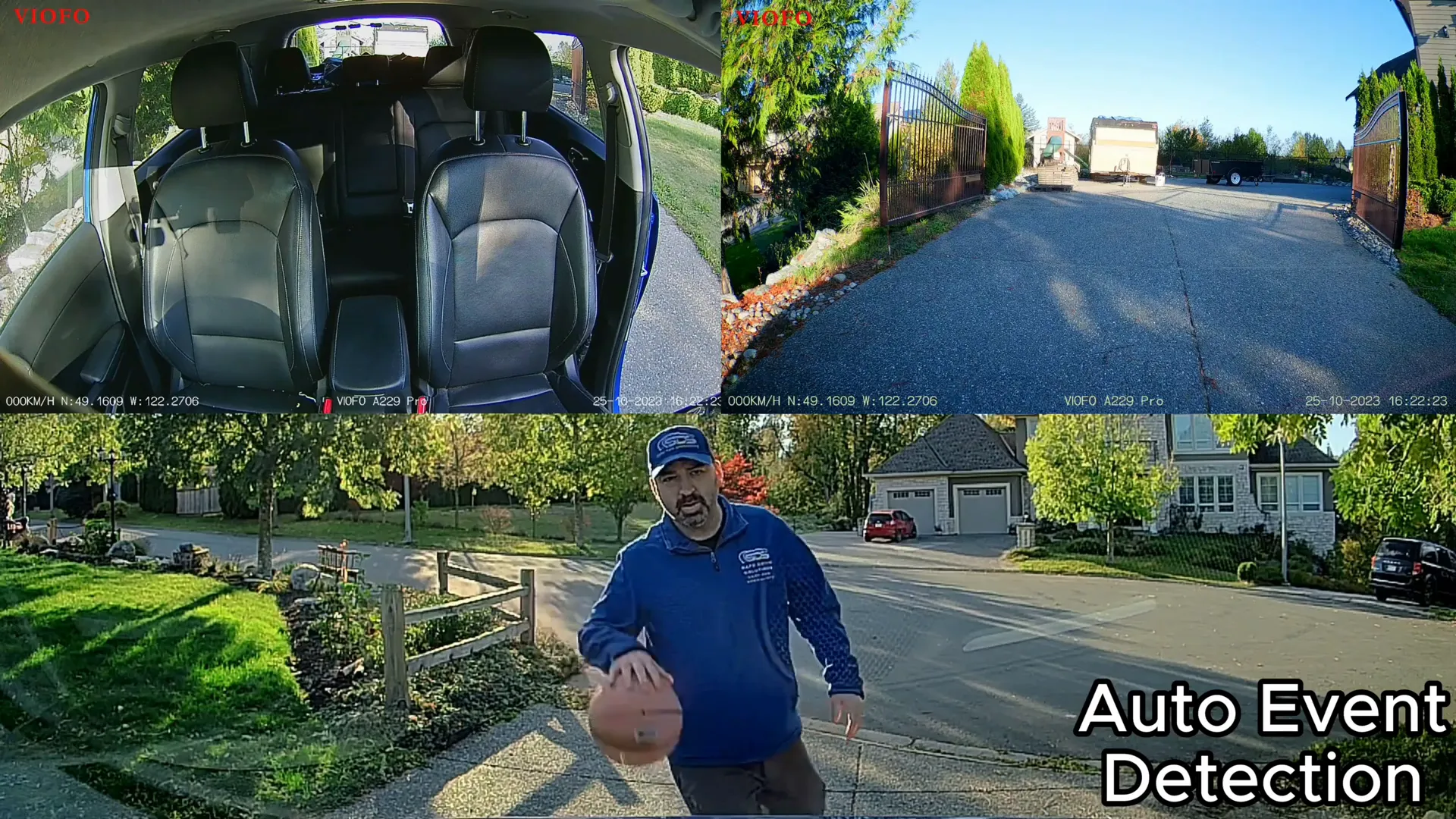
Common Myth: Many believe the dash cam sleeps and only wakes when motion is detected, but tests show that motion detection dash cams draw power constantly, regardless of motion.
Pros:
- Ability to record audio while parked.
- Less video footage to review since it records only when motion is detected.
- Buffered recording allows viewing of events before motion occurs.
- Typically records in full video resolution (e.g., 4K cameras record 4K parking videos).
Cons:
- Does not sleep; constant power draw can drain your car battery.
- Recommended to use a battery pack for recordings longer than 3 hours.
- Motion detection might miss incidents if the sensor is not triggered.
- Some dash cams have no motion sensors on rear or interior cameras.
- AI-based motion detection can fail to record if it misinterprets what constitutes danger.
2. Time Lapse Parking Mode
Time lapse mode continuously records while parked by capturing fewer frames per second — typically adjustable between 1 to 10 frames per second. This extends your SD card’s recording capacity significantly (for example, 1 frame per second uses only 2 minutes of SD card space per hour of recording).

However, time lapse mode does not record audio, and fast impacts may result in missing critical details like license plates due to the reduced frame rate.
Pros:
- Efficient use of SD card space, allowing extended parking recording.
- Some models, like the Vueroid D21 4K, switch to full 30 fps and enable audio recording if an impact occurs.
- Flexible frame rate options (1, 2, 3, 5, or 10 fps) available on cameras like VOFO.
Cons:
- No audio recording unless the dash cam switches modes during an incident.
- Lower frame rates may miss critical details.
- Constant power draw without sleep mode; battery packs recommended for long durations.
3. Low Bit Rate Parking Mode
This mode records continuously at 30 frames per second but reduces the video quality to about one-third the normal size, extending recording time while using less SD card space. It supports audio recording and typically records continuously while parked.
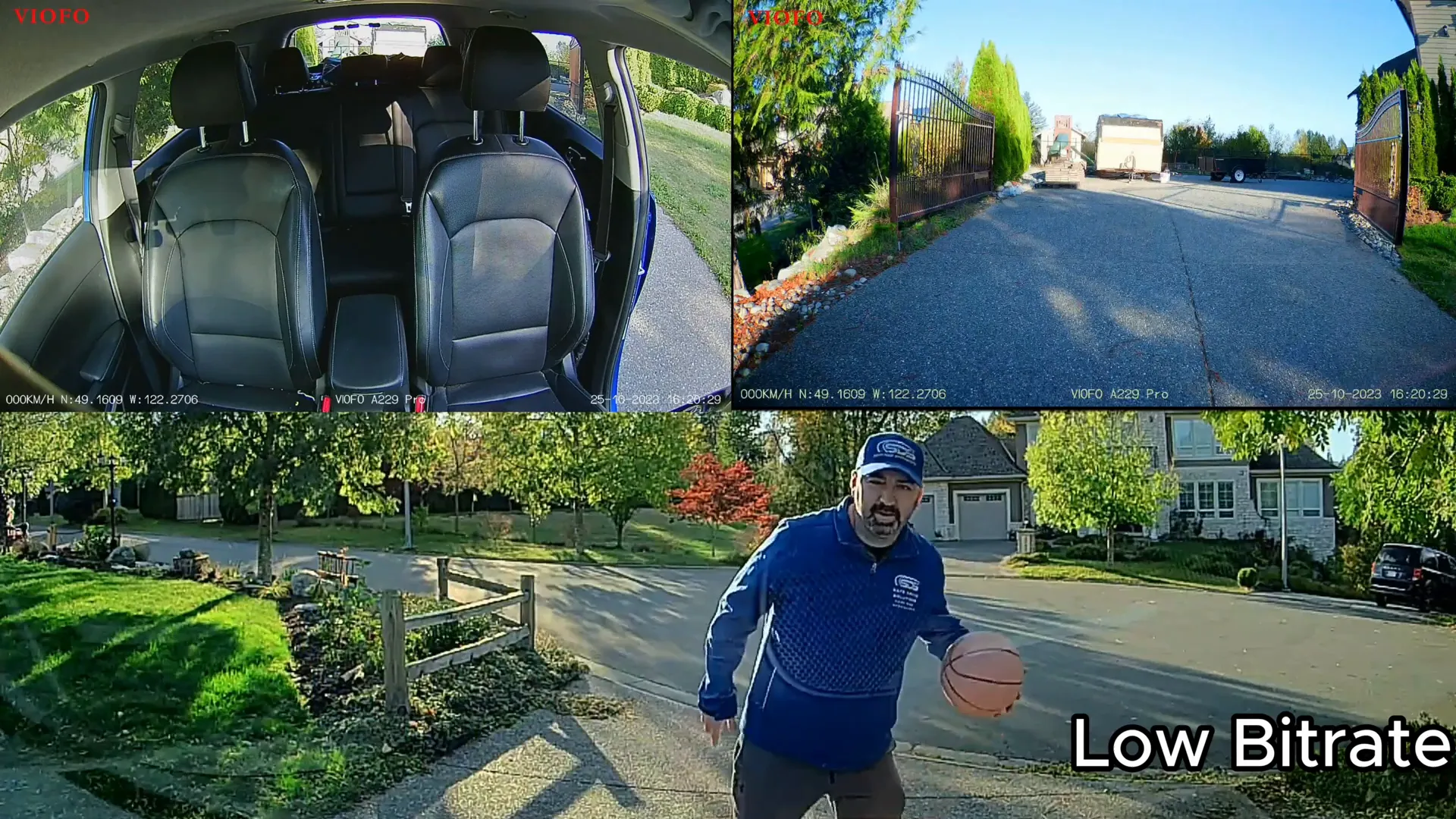
Pros:
- Continuous recording with audio in parking mode.
- High frame rate (30 fps) improves chances of capturing critical details.
Cons:
- Large volume of footage to review unless an impact event occurs.
- Constant power draw; a battery pack is advisable for extended use.
- May require a larger SD card to avoid overwriting footage.
4. Impact Detection (Low Power Mode / Energy Saving Mode)
Often called low power mode or energy saving mode, this parking mode is highly energy efficient and ideal for electric vehicles, hybrids, or cars with smaller batteries. The dash cam goes into a low-power sleep state and only wakes up to record when the built-in G sensor detects an impact.
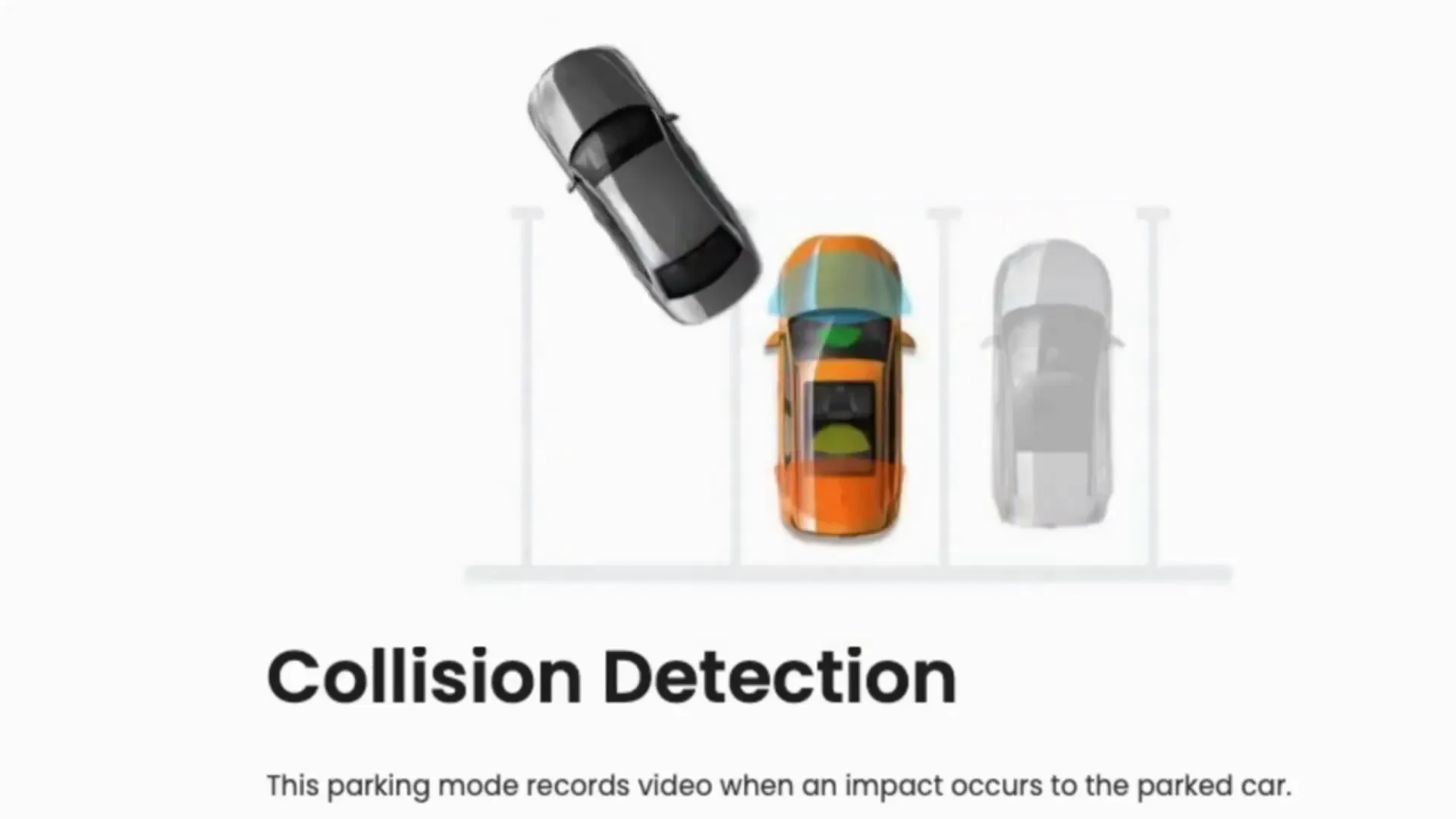
This mode has many names depending on the manufacturer:
- Thinkware: Energy Saving Mode
- Vueroid: Low Power Mode
- Vantrue / 70Mai: Collision Detection
- VIOFO A329S: Low Power Impact Detection
- Red Tiger: G Sensor Active Recording
- Fine Vu: Power Saving Parking Mode
Pros:
- Can last for days or weeks without draining the car battery on some units.
- Ideal for long-term parking, such as at airports or when working from home.
- Very low current draw with recordings only triggered by impacts.
Cons:
- Some dash cams take 6 to 18 seconds to wake up after impact, which may be too slow to capture the incident.
- Non-impact incidents like a vehicle rubbing against your car may not trigger the sensor.
- Records after the impact, potentially missing the original event.
5. Radar Parking Mode
Radar parking mode is an advanced form of motion detection that uses radar technology to detect movement around your vehicle. For example, the Thinkware U3000 supports radar detection on both front and rear cameras, offering enhanced protection.
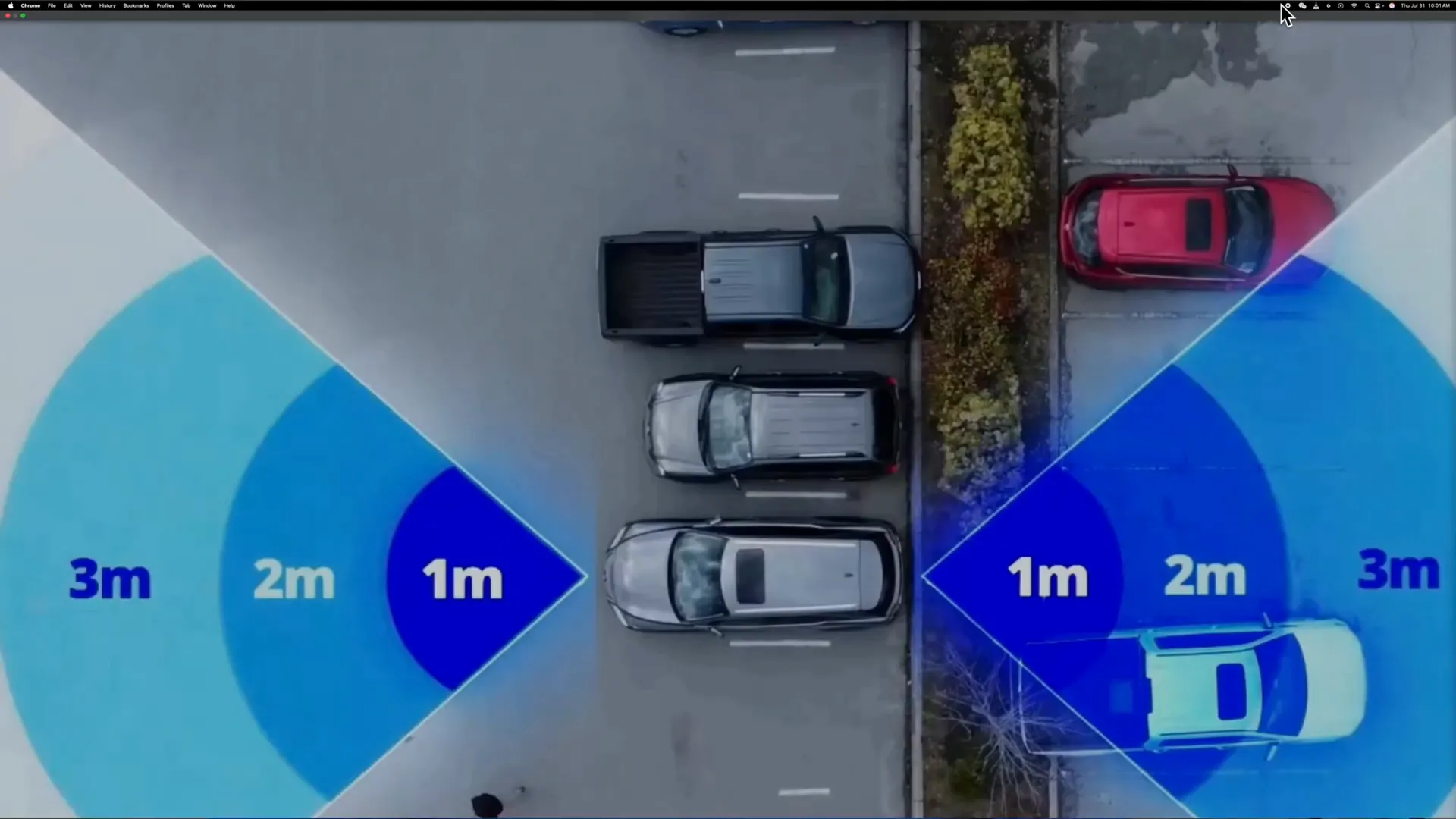
This mode reduces power consumption by only recording when radar detects motion, without buffering video before the event.
Pros:
- Low current draw, preserving car battery life.
- Wakes and records only when motion is detected.
- No need for a battery pack under normal parking conditions.
- When combined with a battery pack, can provide days of parking coverage.
Cons:
- No buffered video before motion detection, so you may miss the lead-up to an event.
- Narrower field of view compared to traditional motion detection cameras.
Top Dash Cam Recommendations for Parking Mode
Choosing the right dash cam depends on the parking mode you prefer and your vehicle type. Here are our top picks based on extensive testing:
Motion Detection
- Thinkware U3000, U1000 Plus – Reliable front and rear motion detection.
- Vueroid D21 4K, D20 Q2 – Both front and rear cameras detect motion effectively.
Note: We don’t recommend VIOFO dash cams for motion detection due to issues with their 15-second buffer in high heat conditions, which can cause failures or lock-ups.
Time Lapse
- Vueroid D21 4K, D20 Q2 – Automatically switches to 30 fps and audio recording on impact.
- VIOFO A229 Pro Plus, A329S – Offers flexible frame rate options from 1 to 10 fps.
Low Bit Rate
- VIOFO A229 Pro Plus, A329S – Recommended for continuous recording with audio while conserving SD card space.
Low Power Impact Detection
- VIOFO A329S – Quick 1-2 second wake-up time.
- Thinkware U3000
- Vueroid D21 4K, D20 Q2
Radar Parking Mode
- Thinkware U3000 – Currently the leader in radar parking mode technology.
Final Thoughts: Choosing the Right Dash Cam and Protecting Your Vehicle’s Battery
When selecting a dash cam with parking mode, it’s crucial to choose a model that includes a cut-off timer. We recommend a cut-off timer of at least three hours to prevent excessive battery drain. Longer cut-off timers, such as 12, 24, or 48 hours, might risk damaging your vehicle’s battery, especially with newer, more expensive batteries running at higher voltages.
If you require parking mode recording beyond three hours, investing in a dedicated dash cam battery pack is essential. Keep in mind that battery packs take about 50 minutes or more of driving to fully charge but will protect your car battery from wear and tear while providing extended parking coverage.
For professional installation services and expert advice on choosing the best dash cam for your vehicle, check out Safe Drive Solutions’ dash cam installation offerings in Vancouver and Toronto. We also supply a wide range of dash cams and accessories, including hardwiring cables like the Thinkware TWA-SH hardwire cable and OBD2 cables such as the IROAD OBD Power Cable for seamless parking mode integration.
Learn more about dash cams and parking modes in our related blogs:
- Understanding Dash Cam Parking Mode
- Benefits of OBD2 Cables for Dash Cameras
- Will My Car Battery Die from a Dash Cam?
- Viofo A329 Dash Cam Review
With the right dash cam and parking mode setup, you can rest easy knowing your vehicle is protected even when you’re not around. Whether you prioritize continuous recording, battery efficiency, or advanced radar detection, there’s a dash cam solution tailored to your needs.
Drive safe and protect your vehicle with confidence!
